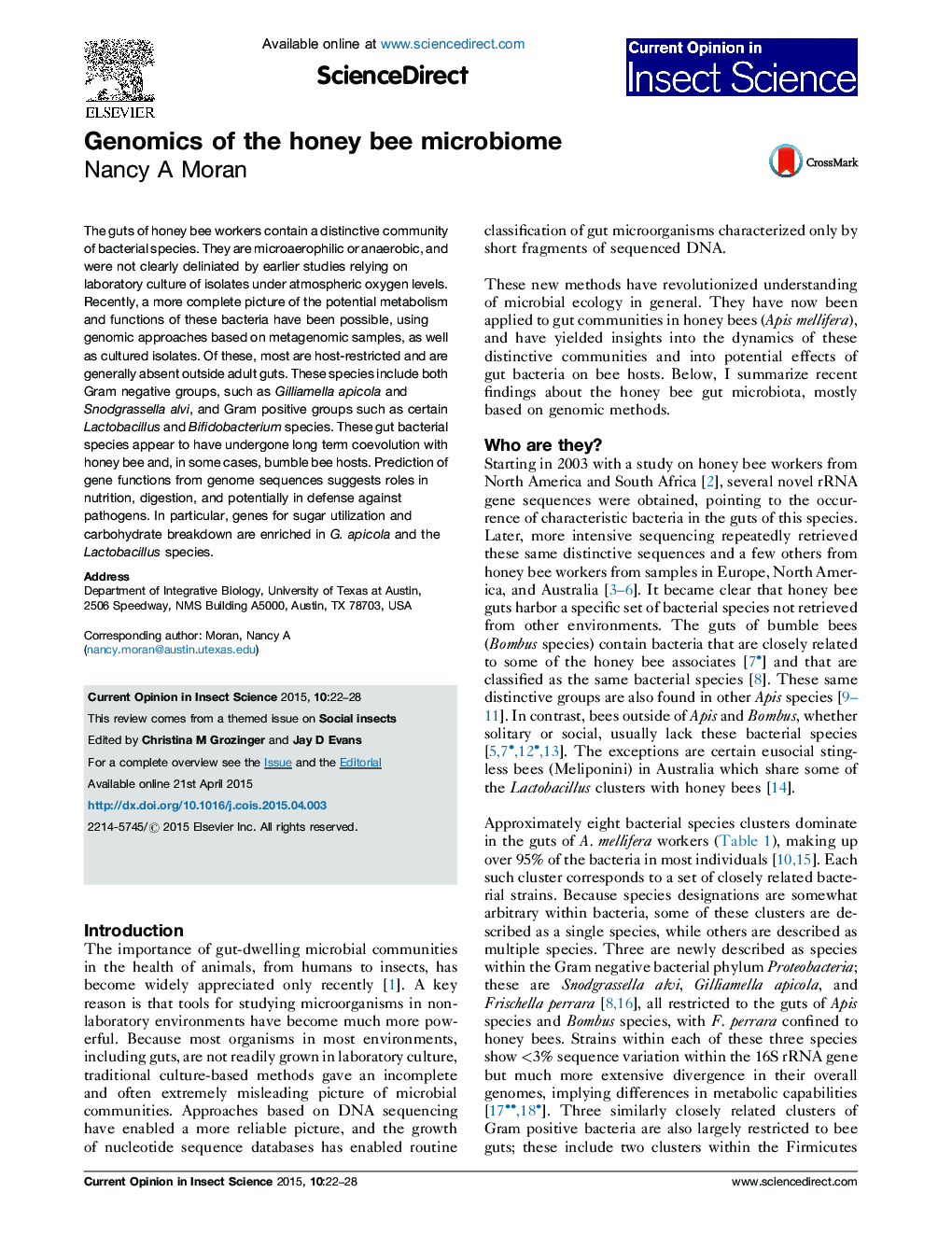| Article ID | Journal | Published Year | Pages | File Type |
|---|---|---|---|---|
| 6374105 | Current Opinion in Insect Science | 2015 | 7 Pages |
Abstract
The guts of honey bee workers contain a distinctive community of bacterial species. They are microaerophilic or anaerobic, and were not clearly deliniated by earlier studies relying on laboratory culture of isolates under atmospheric oxygen levels. Recently, a more complete picture of the potential metabolism and functions of these bacteria have been possible, using genomic approaches based on metagenomic samples, as well as cultured isolates. Of these, most are host-restricted and are generally absent outside adult guts. These species include both Gram negative groups, such as Gilliamella apicola and Snodgrassella alvi, and Gram positive groups such as certain Lactobacillus and Bifidobacterium species. These gut bacterial species appear to have undergone long term coevolution with honey bee and, in some cases, bumble bee hosts. Prediction of gene functions from genome sequences suggests roles in nutrition, digestion, and potentially in defense against pathogens. In particular, genes for sugar utilization and carbohydrate breakdown are enriched in G. apicola and the Lactobacillus species.
Related Topics
Life Sciences
Agricultural and Biological Sciences
Agronomy and Crop Science
Authors
Nancy A Moran,
